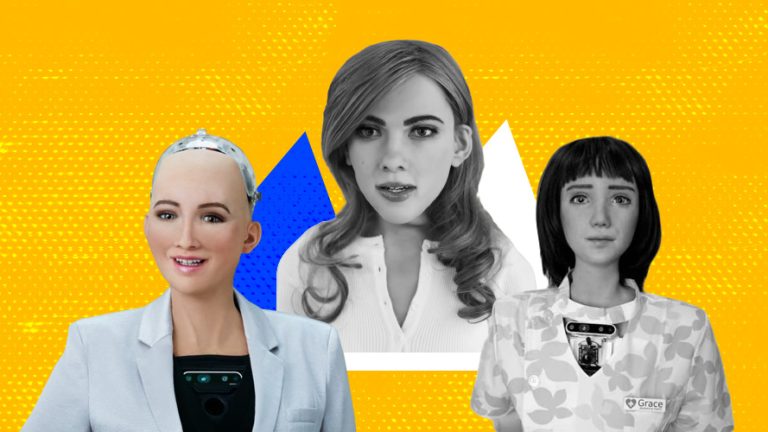Female humanoid robots are being widely used by roboticists. Here are the top 5 female AI robots.
Roboticists are increasingly using female humanoid robots, or “gynoids,” in their work. These AI robotic ladies can be employed for a variety of purposes, including amusement, friendship, and even sexual fulfillment. They are created to imitate real women in both appearance and conduct. Female humanoid robots have appeared in films, TV shows, and video games. They are frequently portrayed as elegant, highly-advanced machines that are capable of carrying out a variety of jobs. Female humanoid robots are still gaining popularity, but they also bring up a variety of moral and social issues.
These could also contribute to a greater devaluation of women in society, according to critics, who claim that these robots reinforce damaging stereotypes and objectify women. Others are concerned that the advancement of robotic technology may result in widespread job loss and economic inequality. Notwithstanding these reservations, the creation of female humanoid robots pushes the limits of what is feasible in the science of robotics and highlights critical issues regarding how technology affects how we perceive gender and identity. Here are the top five female AI robots.
1. Nadine
Nanyang Technological University in Singapore researchers developed the sophisticated humanoid robot, Nadine. She can hold conversations, recognize faces, and even convey emotion through her expressions because of her human-like design. Because of her skills, Nadine is a good fit for jobs in customer service, healthcare, and education.
2. Erica
An AI robot named Erica was created with a natural and intuitive approach to interacting with people. Erica is a conversational AI that was created by a team of researchers from the University of Tokyo. Erica employs machine-learning techniques to comprehend human language and emotions. In contrast to other robots, Erica was created to have a distinct personality and the ability to convey emotions through gestures and facial expressions. Many potential uses, ranging from customer service to healthcare, are being considered for Erica.
3. Sophia
Hanson Robotics created Sophia, a humanoid robot with artificial intelligence and language processing skills. She gained notoriety in 2017 when Saudi Arabia gave her citizenship, making her the first robot to do so. Sophia has been taught to converse with people, identify faces, and decipher emotional expressions. Also, she has participated in events, discussion programs, and news broadcasts where she has demonstrated her skills and interacted with viewers. Although the advancement of Sophia and her potential uses in a variety of fields are intriguing, several experts have expressed worries about the moral ramifications of giving robots citizenship and their potential effects on society.
4. Junko Chihira
A humanoid robot named Junko Chihira was created by Toshiba in Japan. She has been deployed at department stores and shopping malls and was created to perform customer service jobs. Chihira uses artificial intelligence to recognize faces, greet clients in a variety of languages, and answer questions. Her interactions with consumers are more engaging and natural because the way she moves and gestures mimic human behavior. The creation of Chihira and its integration into the service sector shows how AI robots can enhance consumer experiences and simplify company processes. Robots like Chihira might appear more frequently in public places and businesses as technology develops.
5. Jia Jia
The University of Science and Technology of China researchers created Jia Jia, a humanoid robot that resembles a real person. She was created to resemble a young Chinese woman, and she can communicate with people thanks to software that uses natural language processing. To enhance the realism of Jia Jia’s interactions with people, her developers also gave her facial recognition technology and the capacity to make facial expressions and movements. Jia Jia’s development and capabilities highlight the potential for AI robots to be integrated into daily life in the future, even though her primary function is to be used as a research tool for researching human-robot interactions.






Add comment